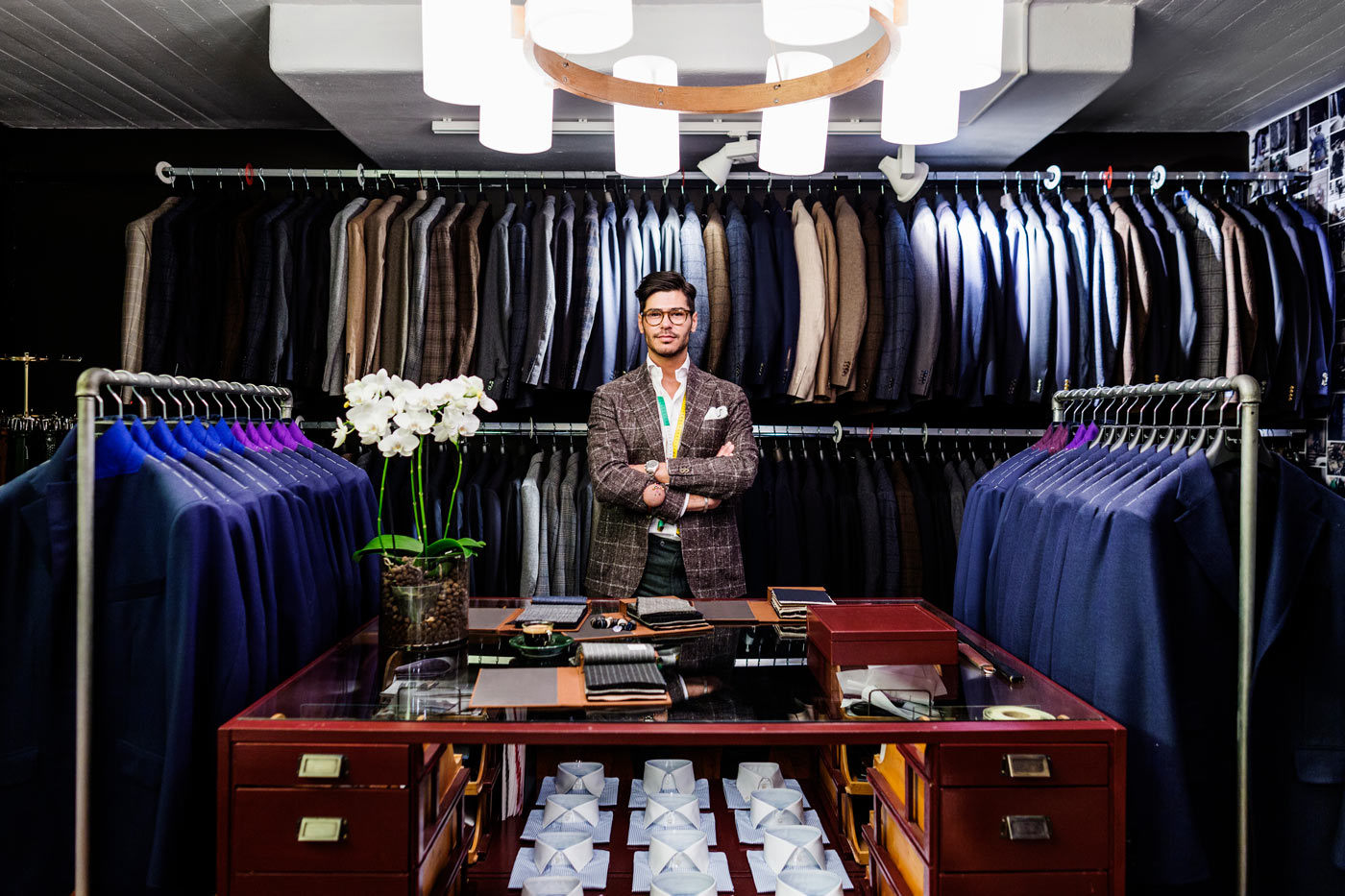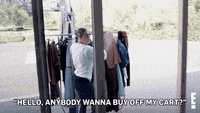Welcome to The Merchant Life, for retailers and retail enthusiasts wanting the insider perspective of all things retail.
Now let’s talk shop.
In this week’s newsletter we focus on the future of digitally native DTC brands as they enter the world of brick-and-mortar, what they’ll need to succeed offline and the fundamentals they shouldn’t live without.
Let’s dive in.
Why get physical?
Before we get physical, here’s a quick refresher on how brands can sell products:
- Online through a brand’s own e-commerce site or social shopping platform.
- Through an online marketplace like Etsy or Amazon.
- Wholesale via department stores like Nordstrom and Macy’s or independent retailers, in their online and offline stores.
- A DTC brand’s own physical store.
As we embarked on the toughest year of retail (in our lifetime), we saw many retailers shift online as stores were closed and they quickly changed the way they served the customer through tech tools like AI chatbots, liveshopping, and more.
In many cases, enabling technology and keeping customer’s engaged was the only way many retailers were able to keep their heads above water and digitally native DTC brands were the big winners. They could easily enable technology to interact with the customer, launch trending categories of products quickly and use advanced digital marketing tools to increase profitability.
But what happens as stores re-open and we get a view into the post-pandemic world?
Customers are more savvy than ever and they are quick to shift the way they shop and they miss the experience of walking into a store.
In fact, as stores started to re-open in the last few months, physical store sales are higher than ever.
According to Just-Style:
Retail sales volumes were 42.4% higher than in April 2020, which was affected by the first national lockdown when the tightest restrictions were in place.
Will DTC brands get on board and see value in the physical store?
We asked Ricardo Belmar, founder of Retail Razor, his thoughts on the shift to physical retail and why DTC brands are making the move:
Typically, the interest comes from growth – many of the brands are hitting a ceiling in growth due to customer acquisition costs and feel they need stores to break through that barrier.
When you consider that over 80% of sales are still made in stores today, and the latest reports I’m seeing are that by 2024 it will still be at least 75% globally, plus stores gives brands a direct feedback channel with customers from which they can learn and apply back to their products.
According to Shopify,
When looking at some of the most popular DTC brands, we expect nothing less than a top-notch digital experience. They’re now replicating those rich digital experiences into engaging physical presences.
We spoke to Nathan Lomax of Quickfire Digital, a digital evolution agency with a focus on e-commerce, about his DTC clients exploring a physical presence.
“We are working with several clients that are looking to adopt a physical store presence now the lockdown is easing. Many neglect the importance of a high street presence when it comes to consumer trust and brand awareness.
With commercial property experiencing a difficult few months, pop up shops and short term rents have made this far more accessible for many retailers that perhaps had initially ruled out a bricks and mortar offering as part of their e-com strategy.”
Experiences, capturing customer feedback, putting a face to the email addresses and customer data —> a brick-and-mortar store will give DTC brands new ways to get closer to their customer that could not be accomplished in a digital world.
Nathan also makes a great point on DTC brands partnering with each other:
“We are seeing brands looking to partner and create mini boutiques showcasing a range of products from multiple retailers.
Many brands are adopting Bricks and Mortar alongside their e-com store as well rather than choosing one or the other.”
Partnerships, showcases, collaborations like BarkBox + Costco, Parachute + Crate & Barrel, Nordstrom + Bonobos, Glossier, and Skims are a great way for DTC brands to enter the physical space and launch into established retailers without spending the marketing $ to acquire the customer. It also makes retailers more relevant as they invest in DTC brands.
We also asked Nathan if he is encouraging his DTC clients to go omni and make more of an impact offline.
“It’s very much on our roadmap and a reason why we ran the most recent Shopify webinar focused on Omnichannel was to help brands with their online and offline presence.
We are encouraging them to embrace Shopify POS but we need to make more of this as part of our core offering as this Is the future of retail!”
The question is what exactly to DTC brands need to get physical?
What can help DTC brands drive results on and offline?
Let’s find out…
Online to Offline
Digitally native DTC brands have a lot going for them. DTC retailers have the opportunity to sell directly to consumers while cutting out the middleman alongside creating unique experiences.
They are retail rockstars because they have:
- a low barrier to enter the market by avoiding 3rd party distributors and retailers.
- an endless aisle of products.
- the ability to be quick to shift and adjust to market trends.
- access to 1st party customer data to drive product and marketing decisions.
- a quicker go to market processes to test new products.
In fact, DTC sales are rising. Statista says e-commerce sales will grow almost 20% by 2024. So if e-commerce is kicking a$$ then why change course and rock the boat?

DTC has it made.
BUT
Rocking the boat is necessary and here’s why.
According to Shopify, “Faced with the reality that they can’t rely on paid social media ads to grow forever, digitally native brands started expanding into physical retail as a way to lower their CAC”.
In this LinkedIn post, Ricardo says “it’s about increasing lifetime customer value at the lowest possible cost”.
There is a reason why Knix Wear raised $53M, why Warby Parker raised $245M last year, and why Nordstrom is partnering with so many DTC brands.
The shift is necessary but there are a few challenges.
We talked to Ricardo about some of the roadblocks in taking the plunge into physical retail:
“A few hurdles are around finding the right location, the right retail tech stack, training store associates (not just on product but on selling!), and the operational logistics around staffing and stocking a physical store.
Those operational processes tie directly into the retail tech stack and this is often where brands struggle because the same tools that power your online digital presence aren’t always what you need to operate a store.”
And he’s not wrong.
Finding the right location, the right retail tech stack and sales associate training is par for the course but there’s a lot more to it.
RSG Insights:
With all these great advantages of retailing, there are some fundamentals that digitally native brands need when retailing offline, where endless aisles don’t exist and customers are not just data.
Let’s walk through some Product, People, and Wholesale fundamentals to get you started.
Product
As a former merchant, setting up my assortment and brand mix was the anchor to success of each season’s collection. It needed to adhere with the fashion direction of the store, appeal to my customers and brand ambassadors, and each sku needed a good reason to be in the mix.
Here are a few things to consider.
📓 The Assortment
- Identify your core collection, key drivers, and basics – always keep them in stock and consider automatic replenishment.
- Categorize your product mix – for example: 60% core, 20% fashion/trend, 20% new and innovative products. As trends become basics and innovative new products sellout, you can shift your core and seasonless assortment investments.
- Identify the purpose of each product in your product mix.For example, slow sellers may drive customers into your store so don’t dismiss them until you know the purpose of every sku.
- What sells online may not sell offline.Test your products online and then merchandise a small assortment in store to see if you get the same reaction.
Do not waste valuable in store space to test every product you have.
- You do not need to have every product showcased in your offline store and your assortment should be able to tell a story and be part of the omnichannel customer journey, whether your store is a showroom concept or part of an experiential experiment.
But getting your product assortment right is only part of the equation.
What comes next is critical to the success of your assortment.
People
The face of the brand, your frontline, your brand ambassadors – they are your biggest influencers.
Invest in them.
📓 Brand Ambassadors
- Your sales teams, visual merchandisers and store stylists represent both online and offline channels and they face the customer. Literally.Give them the tools they need like real-time inventory visibility to easily sell across channels.
- Get your brand ambassadors involved in what your stores look like and give them buy-in on what products should be in your stores.
- The feedback received from customer facing sales teams is invaluable – use it.They hear it, see it, and live it.
- Always shop your store. Talk to your frontline. Sell to your customers. Leaders should make it a habit to work in and consistently live the store experience.
Wholesale
The benefits of wholesale is tremendous.
You don’t need your own location, you can drive exponential growth by selling large orders to a department store vs. 1 order per customer (B2B vs. B2C) and it will allow you to reach a retailer’s already established customer base.
A win win for both the retailer and the brand.
But only if you get your fundamentals right.
Before you collect your prize, here are a few things to bear in mind.
📓 Selling Wholesale
- Have your line sheets ready and include your brand story and marketing material.Make it easy for the retail buyer to say yes.
- Retail buyers need to be delighted – clearly outline your point of difference and suggest your adjacencies (the brands you will sit next to on the shop floor).
- Comp shop – see what brands are already in store and price position your products around the brands you want to be adjacent to.
- Preplan mini-assortments in addition to delivery drops in your linesheets.Remove the guesswork.
Lastly, work with the retailer as a partner so that you can receive customer and product feedback. Having the opportunity to learn from the shop floor data is invaluable, especially when you sit alongside competitive brands.
You can better determine why customers are choosing you or if they are avoiding you like a bad ex 🤦🏽♀️.
There you have it.
A few pointers that could make or break you as you embark on brick-and-mortar.
The retail playbook is always changing but fundamentals will always be the building blocks to set you up for success.







